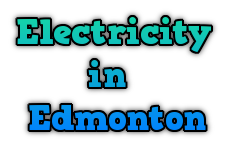

It is possible that we could earn a few cents from ads or referrals.
Alberta is a province in Canada that has been making strides in the generation of clean electricity. The province has been transitioning from coal-fired power plants to renewable energy sources such as wind and solar power. In this article, we will explore how clean electrical generation is in Alberta by comparing natural gas power generation, coal power generation, hydroelectric power generation, nuclear power generation, wind power generation, and solar power generation.
Natural gas power generation is one of the most common forms of electrical generation in Alberta. Natural gas is a fossil fuel that is burned to produce electricity. The process of burning natural gas releases carbon dioxide (CO2) into the atmosphere, which contributes to climate change. However, natural gas power generation is considered to be cleaner than coal power generation because it produces less CO2 per unit of energy produced.
According to the Canada Energy Regulator, Alberta's electricity sector emitted 36.2 megatonnes of carbon dioxide equivalent (MT of CO2e) in 2018. Alberta's generation intensity was 630 grams of CO2e per kilowatt-hour. Alberta produced 52% of Canada's total greenhouse gas emissions from electricity generation in 2018 ². The draft Clean Electricity Regulations (CER) factor in regional differences: in Alberta, some natural gas generation will maintain reliability and affordability of electricity systems transitioning to net-zero. Post 2035, based on the proposed flexibilities in the draft regulations, the modeling shows that all natural gas units can continue to operate in some capacity. With this much capacity to draw from, the CER will not lead to blackouts ⁶.
Coal power generation is one of the oldest forms of electrical generation in Alberta. Coal is a fossil fuel that is burned to produce electricity. The process of burning coal releases large amounts of CO2 into the atmosphere, which contributes to climate change. Coal power generation is considered to be one of the dirtiest forms of electrical generation because it produces the most CO2 per unit of energy produced.
However, Alberta is phasing out coal-fired electricity generation and encouraging cleaner energy generation. More clean energy also means Alberta will complete its phase-out of unabated, coal-fired electricity by mid-2024. That is six and a half years ahead of the original 2030 target. This accomplishment was highlighted by the Powering Past Coal Alliance (PPCA) in late 2022 at the United Nations Climate Change Conference ¹.
Hydroelectric power generation is a clean form of electrical generation that uses the power of moving water to generate electricity. Hydroelectric power generation does not produce any CO2 emissions, making it one of the cleanest forms of electrical generation. Alberta has several hydroelectric power plants that generate electricity for the province.
Nuclear power generation is a clean form of electrical generation that uses nuclear reactions to generate electricity. Nuclear power generation does not produce any CO2 emissions, making it one of the cleanest forms of electrical generation. However, nuclear power generation produces radioactive waste that must be stored safely for thousands of years. Alberta is considering building nuclear power plants in the future. However, there are no nuclear power plants currently operating in the province, but there is a nuclear reactor in service in Edmonton for research.
Wind power generation is a clean form of electrical generation that uses the power of wind to generate electricity. Wind power generation does not produce any CO2 emissions, making it one of the cleanest forms of electrical generation. Alberta has several wind farms that generate electricity for the province.
Today, Alberta is home to more than three quarters of the wind and solar built in Canada in 2022. Growing wind and solar energy that has the province on track to meet or exceed the target it set in 2016—to generate 30 per cent of its total electricity from renewable sources by 2030 ¹.
Solar power generation is a clean form of electrical generation that uses the power of the sun to generate electricity. Solar power generation does not produce any CO2 emissions, making it one of the cleanest forms of electrical generation. Alberta has several solar power plants that generate electricity for the province.
In addition to cleaner air and reduced greenhouse gas emissions, a clean electricity grid can provide several benefits. Natural gas remained the largest source of U.S. electricity generation, increasing from a 37% share of U.S. generation in 2021 to 39% in 2022. The share of coal-fired generation decreased from 23% in 2021 to 20% in 2022 as a number of coal-fired power plants retired and the remaining plants were used less ⁷.
In conclusion, Alberta has been making significant progress in transitioning to cleaner forms of electrical generation. Natural gas power generation is one of the most common forms of electrical generation in Alberta. Natural gas power generation is much cleaner than coal power generation. It produces fewer pollutants than coal and oil, but more than solar, wind, and nuclear power generation.